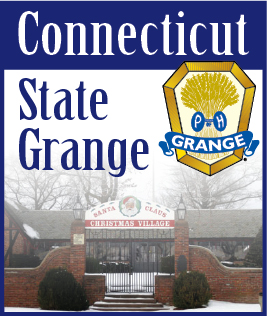| MARCH 4, 2010 -- A winter breeze rustles through the brittle and dormant vines twisting along the hills of Bill Hopkins' vineyard, the latest transformation of a Connecticut farm that since 1786 has been keeping up with changing agriculture, markets and consumer tastes.
The 100-acre family farm on Lake Waramaug in western Connecticut's Litchfield Hills has raised sheep, race horses, tobacco, grain crops and dairy cows. Responding to falling dairy prices and the 24/7 demands of running a dairy business, Hopkins quit in 1979 after 25 years and established Hopkins Vineyard.
Now, the University of Connecticut is studying whether Hopkins' solution - adapting land once used for dairy farms to grape production - can work statewide. The university aims to help dairy farmers diversify and preserve open space, keep land productive and boost grape-growing to supply Connecticut's wineries.
Hopkins, whose wines sell online from a range of $11.99 for a semisweet to $41 for a sweet wine, adapted a 19th-century dairy barn to house the cases of chardonnay and other wines to stores, restaurants and New York city tourists. He's skeptical that his success can be adapted across Connecticut.
"It's possible. I don't know how realistic it is," Hopkins said. "It all depends on the land, the knowledge you have and the equipment."
The winery has been profitable, though it has suffered in the recession, he said.
"The last two years were not good, but the thing is, it's better than dairy farming," Hopkins said.
Leading the university study is Boris Bravo-Ureta, professor of agriculture and resource economics, who said the study will analyze the expected profitablility of specialty crops and examine the potential market for locally grown grapes.
Researchers hope to help dairy producers who are seeking alternative sources of income from their land and fill a growing interest in specialty crops such as grapes.
As the number of Connecticut's dairy farms continues to decline - to 151 last year from 500 in 1990 - grape cultivation is among the fastest-growing agricultural activities in the state, said Agriculture Commissioner F. Philip Prelli. Thirty licensed wineries operate here, he said.
"Every farmer in the state of Connecticut, whether it's dairy or winemaking, is looking at specialty products to help increase their profits," he said. "That's just a business move."
Chris Galen, a spokesman for the National Milk Producers Federation, said dairy farms have been declining in number year after year. Older farmers will retire and younger dairy farm owners must come up with new ways to make money, he said.
However, switching to a different crop, "probably does not happen a lot because of geography and tradition," Galen said.
Jamie Jones, who runs Jones Family Farms in Shelton, which includes a winery, said Connecticut wineries must keep up with rising consumer demand for locally produced food and beverages.
"I think people are becoming more concerned about where their food is coming from, to know their foods," he said.
Adapting dairy land to grape-growing is a "vote for open space," Jones said.
Not all dairy land can be adapted to the new crop. Grape growing cannot be in a valley where early frosts are frequent and land must be well-drained. Ideally, vineyards must have a southeast or southwest exposure, Jones said.
Robin Chesmer, a dairy farmer who owns nearly 800 acres in Lebanon, said using dairy pastures for vineyards "could be an opportunity to diversify."
"Our land might not adapt to some uses, but it could for grapes. With steep slopes, the right land profile, it could be a good mix."
Even before UConn's researchers begin their work, Hopkins thinks he knows what they're facing.
"I can already tell them what they're going to get," he said. "It's pretty hard making a living growing grapes."
|
